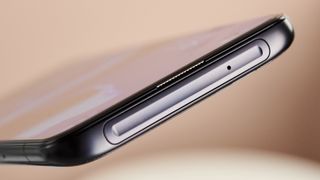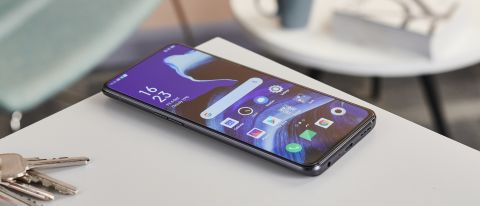Why you can trust TechRadar
Reliability and interface
The Oppo Reno 2 runs Android 9, which isn’t the latest version of Google’s operating system, but Oppo phones, like nearly all devices, haven’t received the Android 10 update yet. Lain over the top of Android 9 is ColorOS, Oppo’s home-made user interface.
While some Chinese manufacturers’ UIs can be a little garish, ColorOS is a little more tranquil, with colors that aren’t too bold and minimal functional changes to stock Android. Icons are nice and big, so they’re easy to hit, and the stock backgrounds are colorful without being lurid.
One improvement here is that there’s far less bloatware than on previous Oppo Reno handsets, and the apps that do come pre-loaded, like Game Space (which optimizes your phone for gaming) and Soloop (a built-in video editing app), are pretty useful, so we didn’t end up deleting them as we normally do with unfamiliar pre-loaded apps.

Getting into your phone is nice and straightforward – the Oppo Reno 2’s in-screen fingerprint sensor is snappy and reliable, and it’s preferable to facial recognition in this case, as you don’t have to wait for the front-facing camera to pop up.
Movies, music and gaming
Thanks to the Oppo Reno 2’s good-looking screen, viewing movies and TV on the phone is a pleasant enough experience, with content – especially cartoons – looking vibrant. The strong brightness also lets you view content when out and about in the sun, so you can happily stream Netflix when sunbathing.
Gaming is a little more of a mixed bag, on account of the Reno 2’s processor. We’ll talk about this more in the ‘Performance and benchmarks’ section, but for now it’s worth knowing that while both the Reno 2 and Reno 2Z have mid-range chipsets, the former’s is optimized for gaming, and that shows.
Generally, both handsets run games well enough, and we could play high-intensity games like PUBG Mobile and Call of Duty Mobile without having our experience hampered. However, the mid-range chipsets reveal their shortcomings now and then, usually in the form of framerate stutters and lag, and this is more noticeable in the Reno 2Z with its lesser chipset.
The most noticeable difference between the devices is game load-up times, and when we timed both devices loading up several big games, the Reno 2 always beat the Reno 2Z by a few seconds. The Game Space app also informed us that the former phone had roughly 3x the available memory of the latter when booting up games.

Game Space is an app on Oppo handsets that silences notifications and minimizes other background processes on your phone to ensure that as much system memory as possible is going towards the game – most smartphone brands have a similar app. In the Oppo Reno 2 and 2Z the app is useful, and it’s likely the reason the mid-range processors don’t have a huge impact on gameplay.
Music played over the speakers sounds a little tinnier than audio played through headphones, a loudspeaker, and even the speakers on other Reno devices. This isn’t a huge issue if you’re not a committed audiophile, and if you’re mainly using the speakers to watch content or play games you’ll likely be too wrapped up to notice, but it’s still a shortcoming compared to many other smartphones.
Performance and reliability
When it comes to processing power the Oppo Reno 2 betrays its mid-range roots, and the Reno 2Z even more so. When put through the Geekbench 5 multi-core benchmark test the phones returned scores of 1,739 and 1,482 respectively.
Those are actually the two lowest scores we’ve seen since Geekbench 5 rolled – admittedly that was only in September 2019, a month before the Oppo Reno 2’s release, so the Reno 2 series don’t necessarily have the lowest Geekbench scores ever, but it’s still not a great sign.
Inside the Oppo Reno 2 is a Snapdragon 730G chipset, while the Reno 2Z gets a Mediatek Helio P90. Both of those are decidedly middling chipsets; the former is from the leading processor manufacturer, but is a mid-range chipset (although optimized for gaming), while the latter is the latest chipset from a smaller manufacturer.
As mentioned, the effect of these middling chipsets is noticeable when you’re playing games, although the various optimizations help to keep issues to a minimum; but the spectre of the chipsets also manifests itself in general use – apps sometimes feel a little slow to open or close, and the camera app can occasionally be sluggish to respond.
Current page: Anything else I need to know?
Prev Page Battery life and camera Next Page Verdict and competition
Tom Bedford was deputy phones editor on TechRadar until late 2022, having worked his way up from staff writer. Though he specialized in phones and tablets, he also took on other tech like electric scooters, smartwatches, fitness, mobile gaming and more. He is based in London, UK and now works for the entertainment site What To Watch.
He graduated in American Literature and Creative Writing from the University of East Anglia. Prior to working on TechRadar, he freelanced in tech, gaming and entertainment, and also spent many years working as a mixologist. He also currently works in film as a screenwriter, director and producer.

